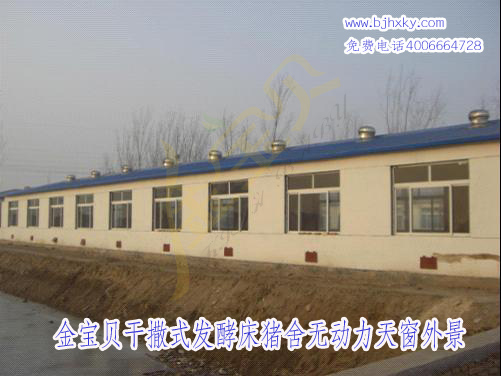With the improvement of living standards, the edible value of Xiang Pork has been accepted by the mass families. The benefits of the breeding of pigs have also been generally recognized. Can the market economy survive the survival of the fittest? How can the cost of breeding be reduced and income increased? It is exactly what we are facing right now.
Here is a brand new model of breeding pig fermentation bed: ecology, environmental protection, conservation of feed, labor, and effective prevention of various pig diseases. The key to the success or failure of the fermentation bed lies in the design of the pig house structure, focusing on the construction requirements for the structure of the fragrant pig fermentation bed:
First, walls and roofs.
Walls and roofs should be insulated as much as possible to make it as cool as possible.
The roof should be ridged and flat roofs should not be used. Do not build a roof on the ridged roof to ensure that the skylights at the roof can discharge exhaust gas outwards.
The height of the eaves (refers to the vertical distance from the surface of the fermentation mattress material to the eaves). Reference index: 2.5 m in the north, 3.0 m in the Central Plains and Yunnan-Guizhou Plateau. The hot and humid area in the south is 3.5-4.0 meters. The roof is generally about 1.5 meters higher than the roof. Too low a house will reduce the air quality in the house and affect the health of the pig.
Second, door and window design.
To ensure ventilation, doors and windows should be as large as possible. The general specification is 1.5 meters * 2.0 meters. Be sure to add skylights and windows. The sunroof should be installed at the highest point of the roof, and it is better to be above the midline of the house. Open a skylight every 1-2 to meet the needs.
The sunroof can be designed by the pig farm itself, but it is best to buy rotating fan-type unpowered sunroofs on the market of aquaculture equipment. (The non-powered sunroof and the powered sunroof are better installed. See the picture below:

Each open a ground window, each about 25 cm * 25 cm in size (above). It is also possible to build multiple smaller ground windows each time the total area is approximately constant. The lower height of the floor window is about 15 cm above the surface of the fermented mattress material, which will affect the rise of hot and humid gas on the ground. If the height is too low, it may cause rainwater to enter the house or the pig will arch out. To prevent rain from entering the enclosure, a flip-type baffle can be installed on the ground window.
Third, the layout of sweet pigs.
The piglet fermentation bed housing is generally built in a single row and the walkway is located in the north. The chute is placed on the edge of the side of the road on the side of the road, or the roadway is made of bricks and cement mortar to form a grooved chute that is integrated with the whole.

The span of a fragrant pig house can be about 9 meters in the current passage, but 10-12 meters is the most advantageous.
Each lap area is generally more than 1 times larger than the cement floor, the best 30-40 square meters, 25-35 pigs. A single lap too small will not only increase the workload of the feeding process, but will also be inconvenient to maintain and turn over the litter. It will also limit the movement of the pig and increase the cost of the pen. When the single lap is too large (50-100 square meters), the defecation of the pigs is too concentrated in one corner, and the labor intensity of excreting the urine and litter evenly consumes more labor intensity, which makes it more difficult to maintain.
Fourth, the setting of drinking fountains.
Drinking fountain and trough are on opposite sides. Drinking fountains are about 50 centimeters apart and make up one drinker per 10-15 pigs. Pigs have lower drinking fountains, and large pigs have slightly higher drinking fountains. Two different drinking fountains can be installed at the same time. Pictured:
Below the drinking fountain, a drinking water diversion platform should be built to divert water from the drinking fountain to the outside of the pen. It is generally 60 cm wide and the length can be flexibly controlled, preferably 1 meter. The sum of the lengths of the general diversion tables accounts for about 1/3 of the length of the pig house.
Fifth, the fence.
The fence of the circle is preferably made of steel bars, steel pipes, cement railings, or made of thick wire mesh, etc. In principle, brick walls are not used. One of its advantages is ventilation, and the other is that it does not occupy space. Third, it does not affect the overall communication of the fermentation bed. Fourth, it increases the contact and communication between herds. Pictured:

The above five points are the standard requirements for building a fermented bed fragrant pig house. If you have any other questions, please feel free to call Beijing Huaxia Kangyuan Technology Co., Ltd. Telephone toll-free hotline:
Nosiheptide Feed Additives,Nosiheptide Antibiotics,Nosiheptide Growth Prompter,Nosiheptide Poultry
Shandong Shengli Bioengineering Co., Ltd , https://www.shenglipharm.com